Table of Contents
- What are B2B sales leads?
- B2B Sales Lead Statistics
- 7 B2B Sales Lead Strategies to Start From
- 9 B2B Lead Generation Tips from Experts
What are B2B sales leads?
A B2B sales lead is a sales qualified business lead. This lead has shown immediate interest in buying your product/service for their business. B2B sales leads are often sourced by sales reps through prospecting. They differ from marketing qualified leads sourced when a consumer downloads a content offer. These consumers might be interested in your product but have not demonstrated immediate intent to buy.
Sourcing B2B leads requires you to understand a company’s goals as well as the individual’s. Not only are you conducting outreach to individuals, but you must also find organizations that are a good fit for your solution.
In many ways, this makes prospecting easier — but the budgets, stakeholders, and gatekeepers you encounter throughout the sales cycle can make finding the right B2B leads that much more important.
Before we move further, benchmark yourself against these three B2B sales landscape stats. Maybe you’re doing quite right, and there’s no need to stress over it.
B2B Sales Lead Statistics
According to recent HubSpot data, sales companies are facing both budget crunches and becoming more risk averse — 70% of sales professionals say that their budgets are being scrutinized more, and 62% say their company is taking fewer risks.
Interestingly, while just 15% of marketers say they’re facing challenges with traffic and lead generation, one of the top challenges cited by marketing teams is making the best use of these leads. In other words, getting great leads is just the start of reciprocal B2B relationships.
It’s also worth noting that B2B leads are expanding their research repositories. While they value data provided by potential partners, research firm Gartner reports that B2B buyers find third-party interactions — sources of data not owned by B2B companies — 1.4x more valuable than information from companies themselves.
As a result, lead generation has become an omnichannel effort that combines both first- and third-party data for best results.
7 B2B Sales Lead Strategies to Start From
If you’re not sure where to begin with B2B sales lead generation, these seven strategies are a great way to get started.
If you’re interested in reading more about how to grow your pipeline, check out our ultimate guide.
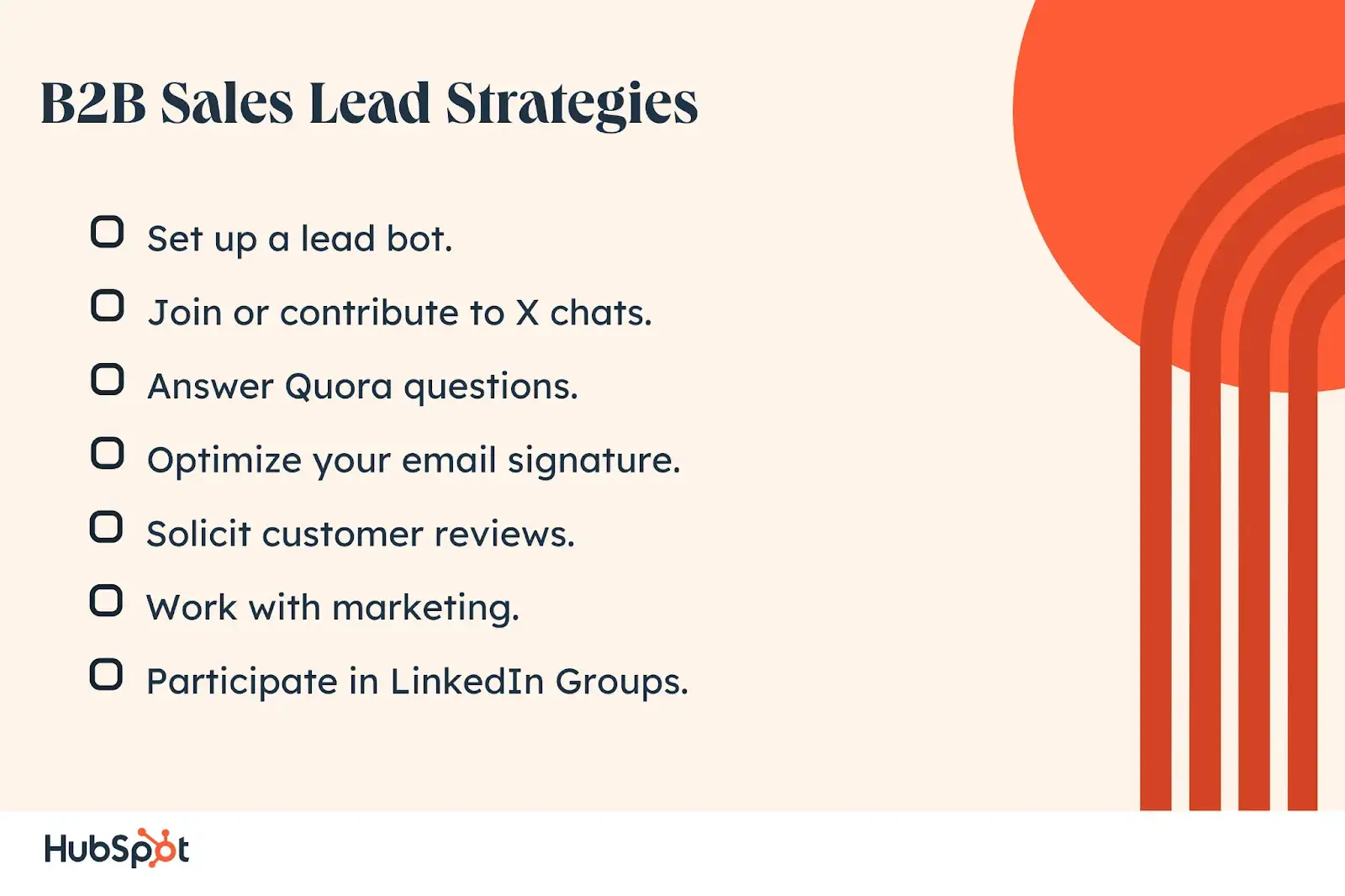
1. Set up a lead bot.
Strategic Account Director Jack Matsen saw a 38% increase in demos booked within six months of implementing a lead bot.
Matsen says, “Our bots collect information that gives us time to come prepared with potential solutions before we walk into meetings with new prospects. Having this information ultimately leads to better, more beneficial conversations.”
It’s important to identify which pages you’ll install lead bots on, what you’ll say, and how you’ll route those leads. If you have a lot of organic traffic coming to your pricing page, or you notice this page is a high converter for you, drop a lead bot there to engage with a higher number of leads.
Make sure the language you’re using with your lead bot is friendly and conversational. In other words, don’t start a conversation with, “Hello, how can I help you today?” Instead, try, “Hello, thanks for stopping by our pricing page! Can I answer any questions about our three pricing tiers?”
Think of HubSpot's example. The lead bot greets you with a straightforward message designed to convert and bring in new leads with less friction. HubSpot’s team also uses smart CTA buttons to guide the lead down the pipeline.
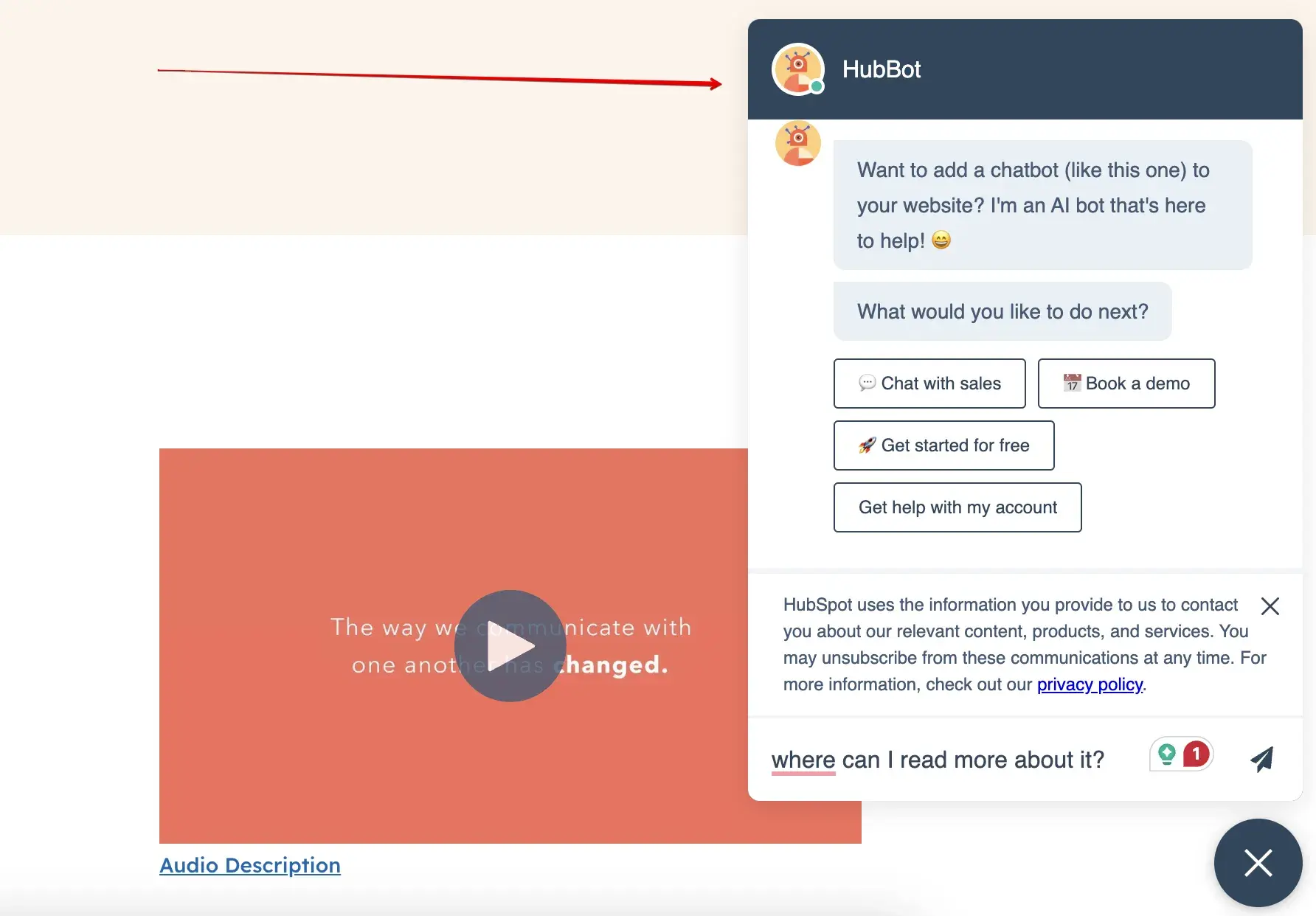
And, once a prospect answers a “qualifying question,” such as “Chat with sales,” have your bot route the lead to the correct rep so a live conversation can take place.
2. Join or contribute to X chats.
X chats are when a group of people meet on X (formerly Twitter) to discuss a certain topic, trend, or interest area using an agreed-upon hashtag. For example, if you sell a PPC tool, you might join the weekly #PPCChat, in which chat runners or guest hosts share a discussion topic ahead of time, and industry folks share their thoughts and questions.
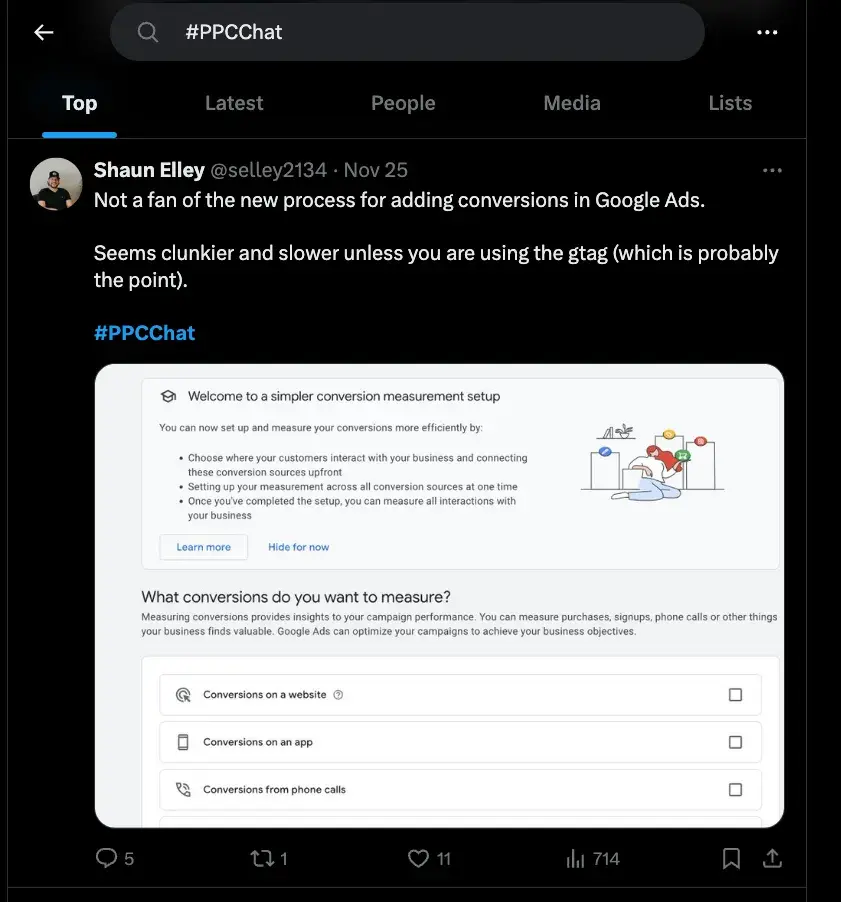
The format of X chats is for the host to share a series of ordered questions (e.g., “Q1: What’s your biggest pain point with your current PPC tool?”), and participants reply in kind (e.g., “A1: My biggest pain point is competitive spend.”).
If you want to reply to someone’s answer or question — like the one above — start by replying directly to the question asker’s question. From there, here’s what NOT to do in an X chat:
- X chat lead: “A1: My biggest pain point is competitive spend.”
- Sales rep: “A1: I sell a PPC tool that can help combat competitive spend. Want to hear more?”
Don’t be that rep. It’s a good way to get a group of people to turn on you and possibly block you from future chats.
Instead, offer value only when you have non-salesy value to contribute, share knowledge, link to helpful articles, and share hacks other clients have used successfully. Here’s what your response should look like:
- X chat lead: “A1: My biggest pain point is competitive spend.”
- Sales rep: “A1: I’ve worked with a lot of people who’ve expressed similar frustrations. Check out this great blog post on auction insights a client of mine recently wrote.”
Show up to these chats regularly and know when to contribute and when to listen. You’ll make connections with people each week, and you can ask if it’s alright to follow up with a few of them offline after you’ve built foundational rapport.
3. Answer Quora and Reddit questions.
You can take a similar approach to Quora or Reddit as you’d take on X chats: Always Be Providing Value (ABVP).
Quora is a knowledge-sharing platform on which users can ask questions and receive answers from industry experts around the world. Good answers are upvoted and appear at the top of the page.
Create a free account, make sure to fill out your profile, and choose your interests. Get a feel for the platform by answering questions. Again, never be overtly salesy. Answer questions you have a background in, and consider rewording blog posts from your company’s website to provide organized and well-researched responses.
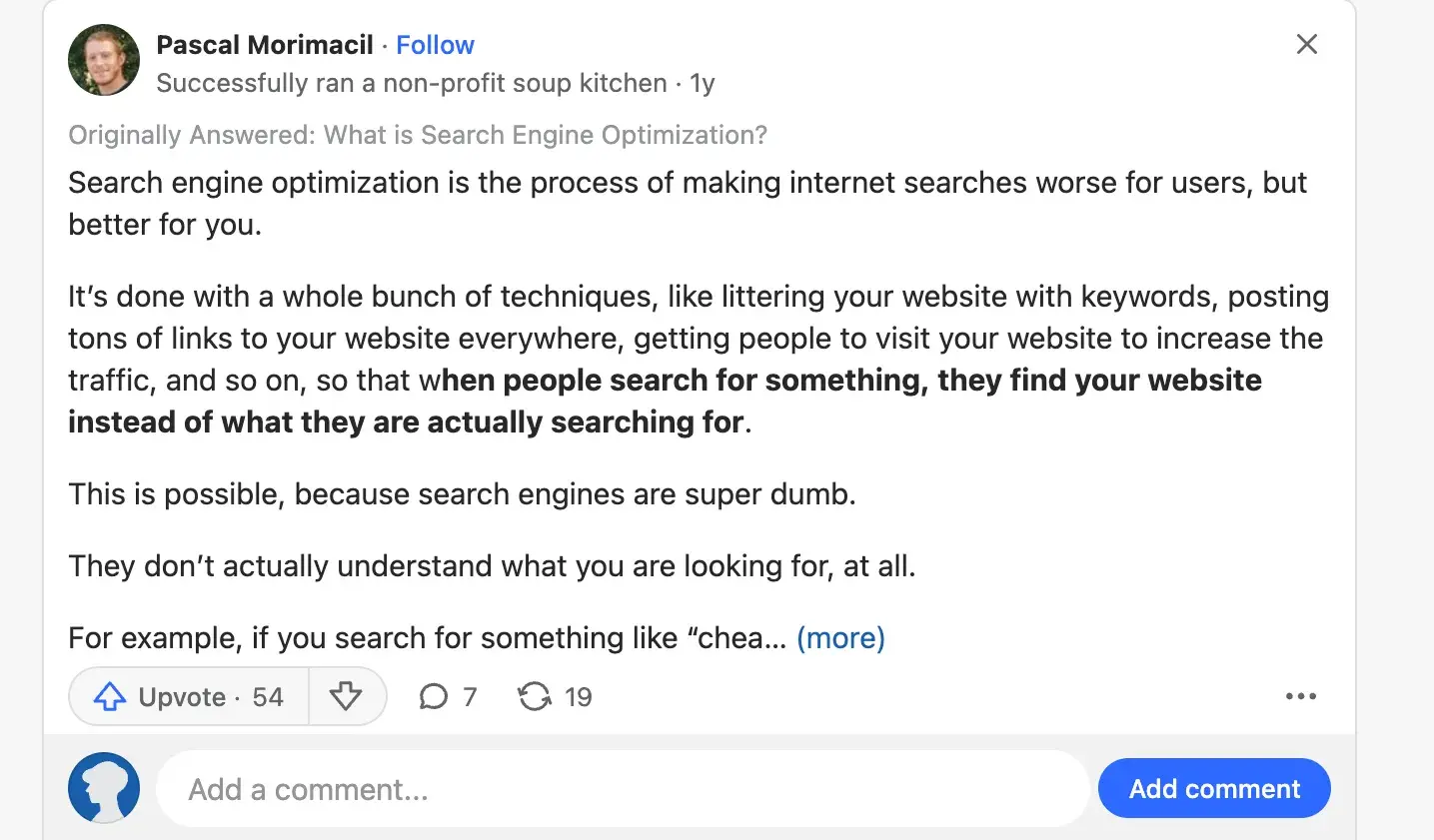
When appropriate, link to a few different articles that might answer your prospect’s next few questions on the matter.
View Quora as a rapport-building tool, and only offer your solution or ask for more of their time if there’s an opening or you’ve connected on another platform like LinkedIn.
4. Optimize your email signature.
The most valuable real estate in any email you send is arguably the email signature. You can sell without selling.
Start by adding a professional headshot, your appropriate contact information, and, if possible, your company logo (hyperlinked back to your website). As a bonus, add recent awards or industry accolades your company has received, links to popular blog posts, a snappy customer review, product announcements, or a calendar link to book time with you.
Expert tip: “Use email signature optimization combined with setting a lead bot. Over 200 leads per quarter were generated just by adding a CTA in email signatures. Adding an AI chatbot to the website also increased the number of qualified leads received after business hours by 40%.” — Jose Gallegos, Growth Marketer & Founder of Jose Angelo Studios.
Pack your email signature with as much value as the body of the email itself and optimize regularly. Need some help getting started? Try this email signature generator.
5. Solicit customer reviews.
Before making a purchase, 95% of consumers read online reviews. So, isn’t it time you make sure your reviews are everywhere? Ask your Customer Support team for a list of happy customers, or pull your top NPS scores and reach out to those customers.
You can even run campaigns asking these happy clients to leave reviews on customer review sites like G2 and Capterra. Having a strong presence on these sites can be a huge lead driver for your business.
Paying for a vendor account on a peer review site comes with added benefits, including customized landing pages, access to industry-specific reports and data, and premium placement in their software directories.
6. Work with marketing.
Whether the stereotype of mortal enemies, sales and marketing, is true for your organization or not, it’s important for reps to understand the importance — and the lucrative nature — of having a strong working relationship with their marketing team.
Here are a few areas to partner with them on:
- SEO. Share trends you’re seeing and hearing from your prospects. For example, let’s say you’re a recruiting service. If you notice a trend in “outsourced recruiting,” you could recommend that your marketing team target that keyword in their content, paid ads, and other SEO strategies to bring in more qualified leads.
- Paid Ads. Share keywords or pain points you hear come up a lot in your calls with prospects. If a common pain point you hear prospects cite is their difficulty giving recruiting the time necessary to do it well, you might share that with Marketing and recommend they run paid ads that speak to this pain point.
- Content. Similarly, routinely meet with Marketing and share common objections or concerns your prospects are bringing to you. Ask them to create blog posts, white papers, and case studies that speak to those objections and educate your prospects before those objections arise.
HubSpot CRM connects your marketing, sales, and customer service on one platform. Sales teams can track activity, manage pipelines, and close more deals with tools like meeting schedulers, email templates, and AI writers.
7. Participate in LinkedIn Groups.
Like X and Quora, the goal of joining LinkedIn Groups is not to spam everyone in the group with your offer. Search for industry groups where you know some target accounts and ideal customers hang out. Become a contributor to the group and build relationships with members by offering value and listening.
Leslie Omaña Begert, Co-founder and Creator of FabuLingua, a learning app for Spanish, shared what has worked best for her business:
"Drawing from our experience cultivating language learning communities, LinkedIn groups emerged as our most powerful B2B connection point. The traditional sales playbook falls short when you're trying to reach educators and learning institutions genuinely interested in innovative teaching methods.”
Our breakthrough came when we shifted from promotional posts to sharing real stories of language learning transformation in educational LinkedIn groups. During one discussion about engaging young learners, I shared how a Texas elementary school implemented our storytelling approach. Their Spanish program saw unprecedented engagement, with students spontaneously using the language outside class. This authentic success story sparked dozens of meaningful conversations with other educators.”
Their main tactic? Shifting from selling to solving real problems. When a group member asked about keeping students motivated, they shared insights from their story-driven method.
Begert wraps it up: “These contributions positioned us as trusted education partners rather than vendors. School administrators started reaching out proactively, already convinced of our expertise through our consistent value-adding presence.”
9 B2B Lead Generation Tips from Experts
Strategies are one thing, but there’s no substitute for real-world experience. Here are nine expert tips to help supercharge your lead generation.
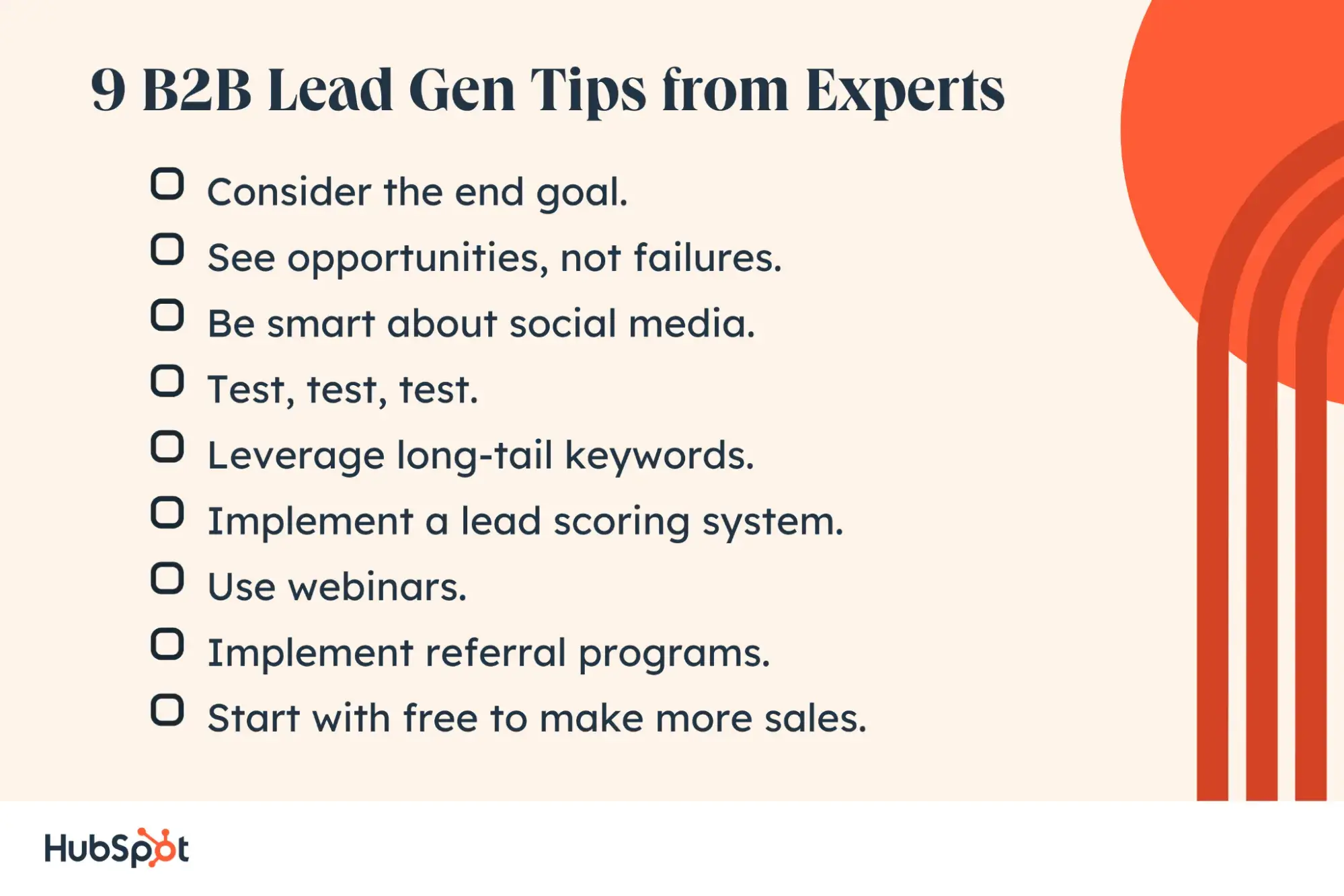
1. Consider the end goal.
It might seem counterintuitive, but your end goal isn’t making sales — it’s making customers. Sales in isolation drive temporary revenue increases, but if every lead buys one product or service and never comes back, your potential pool of purchasers quickly dries up.
Customers, meanwhile, represent a steady revenue stream, as they regularly return to make additional purchases or upgrades.
This is especially critical for B2B lead generation. B2B sales processes typically take longer than their B2C counterparts, have higher purchase prices, and may include multi-year contracts.
2. See opportunities, not failures.
What happens when you don’t make the sale? It’s an inevitable part of the B2B experience: Negotiations that are going well may suddenly stall, or business needs may change in response to market demand, leading to sales that almost cross the finish line but come up just short.
While it’s tempting to see these unclosed deals as failures, they’re actually opportunities. Here’s why: If sales teams can forge relationships with B2B prospects, they can set the stage for opportunities down the line.
Consider a B2B lead that abruptly pivots due to changes in business strategy. Rather than simply walking away, sales teams can recommend tech- or service-agnostic products that could help leads solve their current challenges. The result? When it comes time to make new B2B purchases, your company is top-of-mind.
3. Be smart about social media.
Great content helps capture lead interest and kickstart conversations. Social media can help amplify the impact of content — for good and for ill.
For example, if you’ve got in-depth content that’s performing well in SEO and generating leads, posting it on social media can help drive more interest and create more opportunities. If, however, your content isn’t getting the response you anticipate, social media will make the problem worse. The only difference? More people will see it happen in real time.
Put simply, social media is like a loudspeaker. Don’t announce anything you don’t want heard.
4. Test, test, test.
It’s not new. It’s not flashy. But it is absolutely necessary for your B2B campaigns to succeed: Test, test, test. And when you’re done, test some more.
Here’s why: What you don’t know can hurt your bottom line. Consider a new marketing campaign with a new logo and tagline for your value proposition. On paper, it looks like a great idea. C-suites love it, marketing teams are excited, and sales teams are ready to start fielding calls. And then … nothing happens.
As it turns out, your new campaign didn’t resonate with your target audience. Now, you’re left with two choices: Sink more money into a failing effort or scrap the project and start over, costing even more time and money.
Thankfully, there’s an alternative: Test. Use A/B testing to try out campaign ideas and see which one sticks. Use surveys, emails, and even phone calls to discover what prospects like about your website, your content, and your campaigns. Make changes in line with their responses, and then — you guessed it — test.
5. Leverage long-tail keywords.
Wondering how to generate b2b leads through SEO efforts? You need to look in the right place. Sure, you could spend time and money creating general campaigns that might capture some target audience interest but will mostly go unnoticed. Or, you can make sure that you find your audience — and your audience can find you.
To accomplish this goal, start by defining your target B2B customer. What industry(s) are they in? What does their budget look like? What are their pain points? Once you’ve found your audience, find where they are online. Look at their websites, their social media pages, and their recent press releases.
This gives you a sense of what these leads have, what they want, and what they’re looking for. Equipped with this information, conduct a keyword volume search. What you’re looking for are long-tail keywords — keywords that are three or more words long.
These keywords have lower search volume than their shorter counterparts but target a specific audience. Prospects searching these keywords know what they want and are far more likely to convert. By finding your audience and identifying their ideal keywords, you can capture more of your target market.
6. Implement a lead scoring system.
Not all leads are created equal. Lead scoring helps prioritize the most qualified leads based on factors such as industry, budget, engagement with your content, and interactions with your sales team.
Assign a score to each lead, so you can focus your efforts on those who are most likely to convert.
Having the right lead scoring system in place made all the difference for Expo-Genie’s sales team. Before using SalesWings, they had no way to track lead interest beyond email opens.
The team was flying blind when it came to understanding who was truly engaged. With predictive lead scoring in Salesforce, the sales team could track website visits and identify when leads became warm or hot, even weeks after the initial contact.
This helped them target leads at the perfect moment, leading to a 30% increase in opportunities, a 25% boost in closed deals, and an extra $20K in revenue over the past few months.
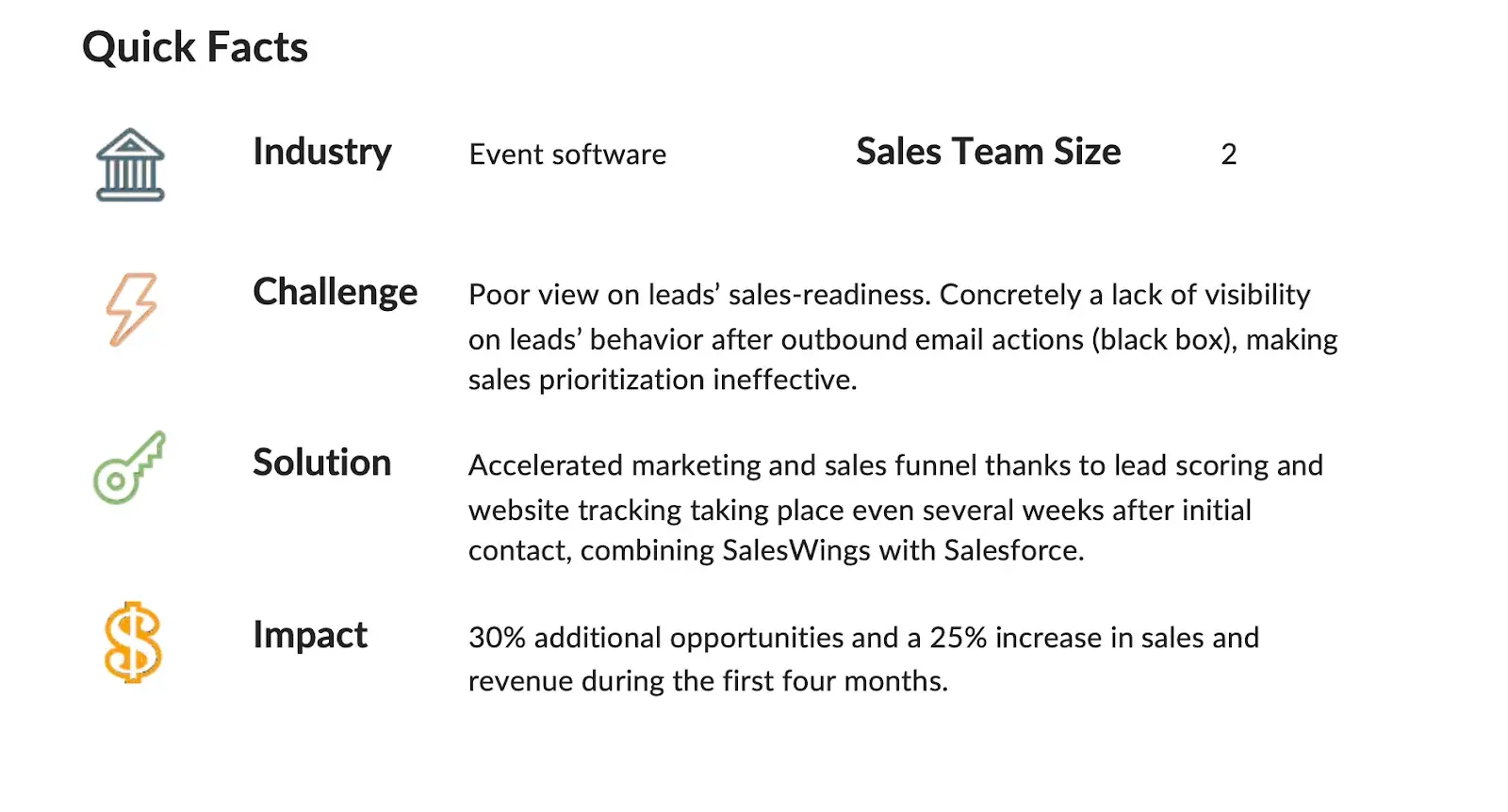
7. Use webinars.
Webinars are an effective way to generate B2B leads by sharing valuable content and engaging with your audience live. Promoting relevant topics attracts leads, while a Q&A session builds trust and showcases your expertise.
One of my favorite books is Diary of A First-Time CMO Vol 1 by Cognism's CMO, Alice de Courcy, in which she talks about how, in the early days at Cognism, she turned webinars into a winning tactic.
Courcy changed her “make that sale” mindset and instead of chasing sign-ups, she focused on creating content that fueled more engaging, high-impact webinars. Plus, she rewarded attendees to boost participation.
Alice hosts live cold-calling sessions where participants can try out their scripts and make calls, while a subject matter expert provides real-time coaching to help them improve.
If attendees miss the live session, they lose out on the chance for personalized, one-on-one feedback.
8. Implement referral programs.
Get your current clients to spread the word. Offer irresistible incentives like discounts, exclusive content, or special rewards for every referral. Since people trust recommendations from colleagues or partners, tapping into your existing network can bring in highly qualified leads who already know and love your business.
I’ve recently read a great case study by Referral Factory that highlights how a B2B financial services business grew significantly through a referral program. This company faced challenges — low conversion rates from PPC ads and difficulty reaching the right audience.
To overcome these struggles, they launched a double-sided referral program where both the referrer and the new customer received rewards. For every successful referral, the referrer earned an Amazon voucher, and the new customer received a £25 discount. They promoted the program through email marketing and added referral links across their website and transactional emails.
The results were nice:
- 5,691 leads generated
- 3,758 new customers acquired
- 66% conversion rate.
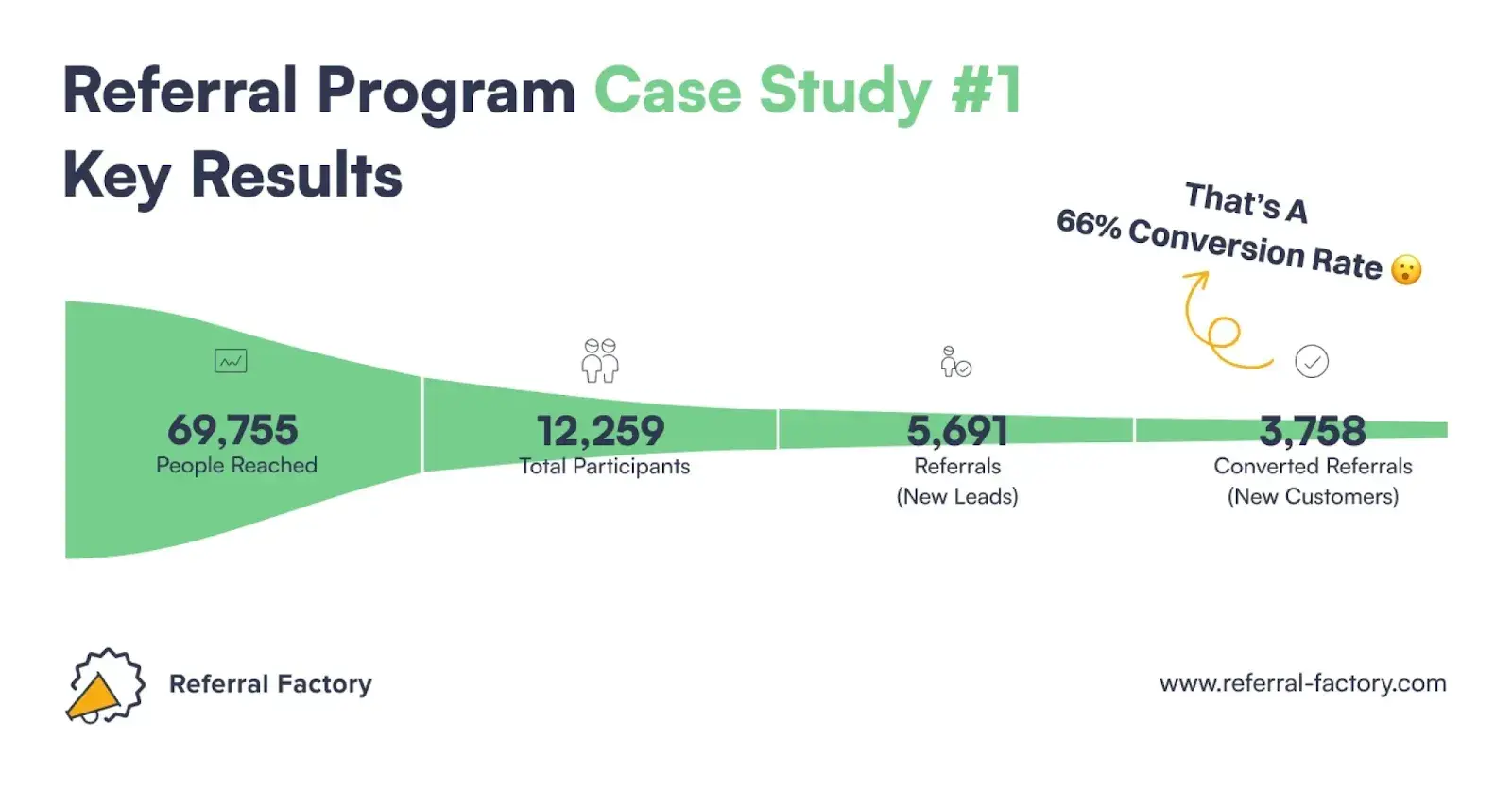
What stood out was the viral effect: 21% of referred customers went on to refer others, creating a strong loop of growth.
9. Start with free to make more sales.
“The way you position yourself at the beginning of a relationship has a profound impact on where you end up,” notes Ron Karr, author of Lead, Sell, or Get Out of the Way.
The old saying holds true: You never get a second chance to make a first impression. And what better way to make a great first impression than by offering leads for free? Maybe it’s a demo of your product, a free eBook, or in-depth market research.
As long as it’s something that your target audience wants, it’s a great way to get the relationship off to a great start and demonstrate that you understand the market.
The Winning Formula: Mix and Match
If I had to choose just one strategy from these seven or one tip from these 9, I couldn‘t. I can’t even say that one works better than the others.
The combination of several is what actually brings the desired results. Recognizing what will work and what your audience will love is “the key to the success” you're looking for.
Try out multiple tips and strategies to see what combination works best for your product, market, and B2B sales lead generation goals.
Lead Generation
.png?width=112&height=112&name=Sales%20Conversion%20and%20Close%20Rate%20Calculator%2001-300%20(1).png)

.png)


.jpg)


.jpg)


